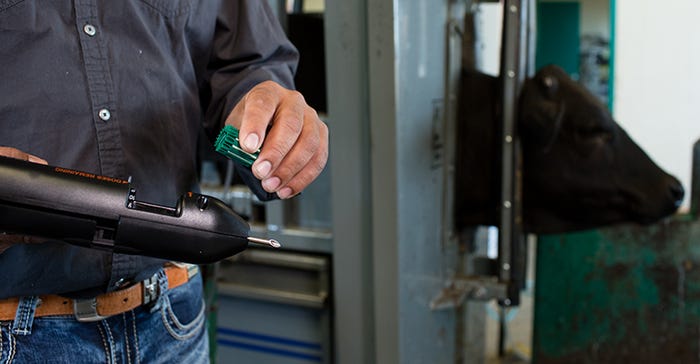Beef producers can help improve implant program success by prioritizing the health and nutrition of their cattle.
April 17, 2018

Sponsored Content
Cattle health can directly affect implant program results. Douglas Hilbig, DVM, Beef Technical Services veterinarian with Zoetis, has witnessed such cases firsthand. “I have seen instances where high-risk, unhealthy cattle come in and, unfortunately, are mismanaged. When an animal’s health is not straightened out quickly enough, the opportunity for gain can be diminished,” Dr. Hilbig said. “Even though the cattle received the same nutrition and implant as others in the herd, their closeout weights were much less — 100 pounds, maybe even more.”
Hilbig added, “Anytime we have late breaks related to health, we likely had subclinical disease in those pens, and because of that, an implant program is unable to perform to its greatest potential.”
By reducing the energy spent on maintaining cattle health and comfort, more energy can be put toward overall increased weight gain. To help ensure cattle health, consider:
Creating a comfortable environment
Administering vaccinations in a timely manner
Deworming regularly to control parasites
Providing excellent nutrition to support growth
Nutrition has a direct impact on the results producers see with implants. In addition to forage, cattlemen can improve nutrition through in-feed supplements.
“The more nutrients producers put in to raise baseline gain, the better response you’ll typically see with an implant program,” said Blaine Corners, PhD, Beef Strategic Technical Services cattle nutritionist with Zoetis.
“Let’s say you are a bricklayer. The bricks represent the nutrients cattle consume. You by yourself can only lay so many bricks a day, but you can hire another bricklayer to increase the number of bricks laid,” Dr. Corners said. “In this example, an implant is the added employee, and total bricks laid equals total gain. If the number of bricks you work with are restricted, one or two bricklayers can only lay until the bricks are gone. If you increase the number of bricklayers from one to two, with adequate bricks, then the level of production (gain) increases, versus when either of the two are limited. So goes gain in cattle — provide adequate nutrition with a quality implant, and watch productivity rise.”

Synovex® One Grass outgained competition in a head-to-head study. Learn more at GrowWithSYNOVEX.com.
Not all growth implants for cattle are created equally. There are many implant choices on the market to choose from, but it’s a decision not to be made lightly. Considerations need to be made to match the amount and quality of forage available as well as the length of time the producer will have the animal grazing. Cattlemen can increase operational flexibility and profit for their grazing stocker steers and heifers with long-duration Synovex® One Grass implants. In an Oklahoma trial, stockers implanted with Synovex One Grass outgained cattle implanted with two competing implants by 20 pounds. The result was an additional $24 per head when the cattle sold in October.*,1Synovex One Grass allows stocker producers to get 200 days of uninterrupted implant performance.
It is important to ensure cattle health and nutrition are a priority when implementing an implant program. Work with a nutritionist and veterinarian who are familiar with your operation to make the most from every dollar invested in your implant program. For more information and resources, please contact your Zoetis representative or visit GrowWithSYNOVEX.com.
Do not use Synovex products in veal calves. Refer to label for complete directions for use, precautions, and warnings.
References:
*Cattle prices are the average paid for 425-pound steers when the study started, $221.75/cwt, and value at completion of the study was the average sale price received for 850-pound steers, $142.50/cwt.
1Data on file, Study Report No. 16CARGFA01, Zoetis Inc.
Legal:
All trademarks are the property of Zoetis Services LLC or a related company or a licensor unless otherwise noted.
© 2018 Zoetis Services LLC. All rights reserved. SYN-00211
About the Author(s)
You May Also Like



